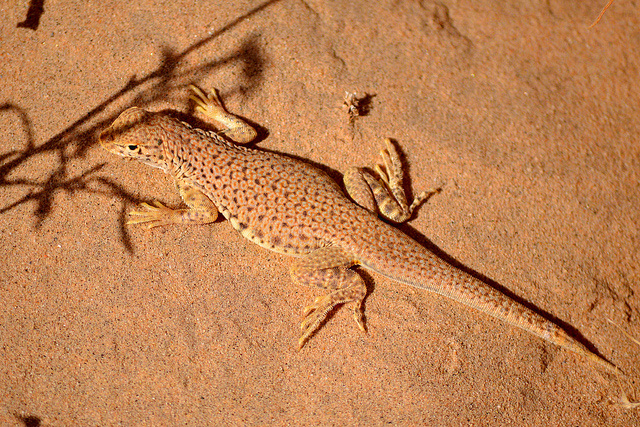
Photo: Coachella Valley fringe-toed lizard by Jeb Bjerke (CDFW)
If you have ever walked on sand, you may know the struggle of moving on a constantly shifting terrain. Lizards of the genus Uma, also known as fringe-toed lizards, are desert dwellers adapted to moving on and through sand. These lizards inhabit windblown sand deposits made of fine particles, including dunes and washes.
Aptly named for the protruding scales on their back toes, their fringed toes help them stay on the surface and move across the sand with ease. In addition to their fancy feet, they have protective traits that allow them to burrow in the sand comfortably such as interlocking eyelid scales, ear flaps, and the ability to close their nostrils. Unfortunately, their protective traits have not shielded them from habitat loss and impacts from off-road vehicles.
There are three species of fringe-toed lizards that occur in California, all of which the CNDDB tracks: Uma scoparia (Mohave fringe-toed lizard), U. notata (Colorado Desert fringe-toed lizard), and U. inornata (Coachella Valley fringe-toed lizard). If you happen to see any of these fancy friends, tell us about your encounter via the Online Field Survey Form.